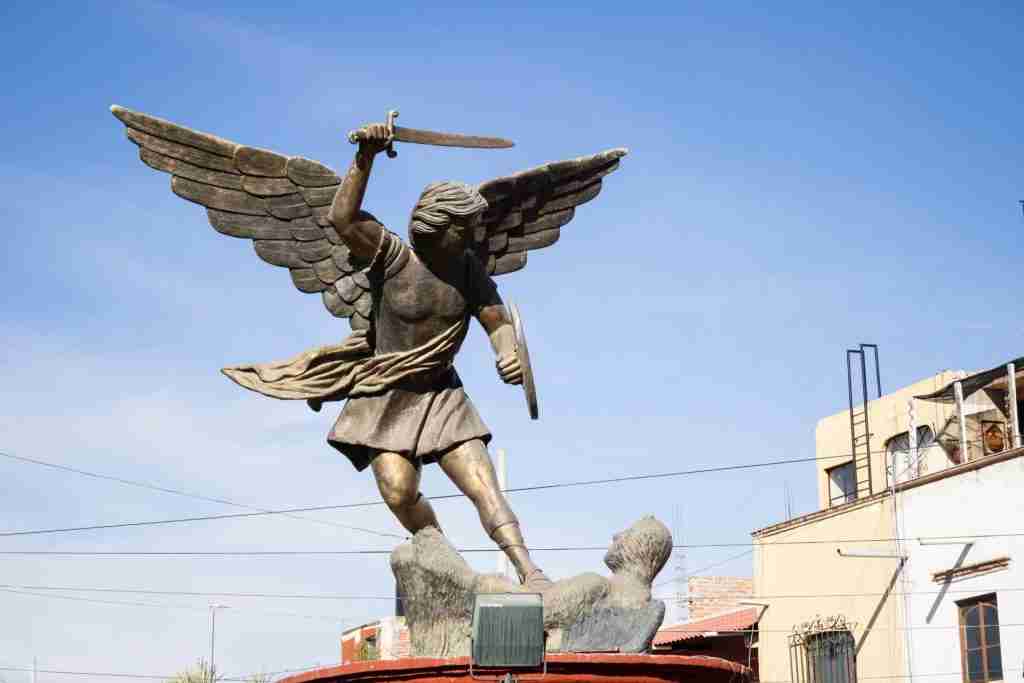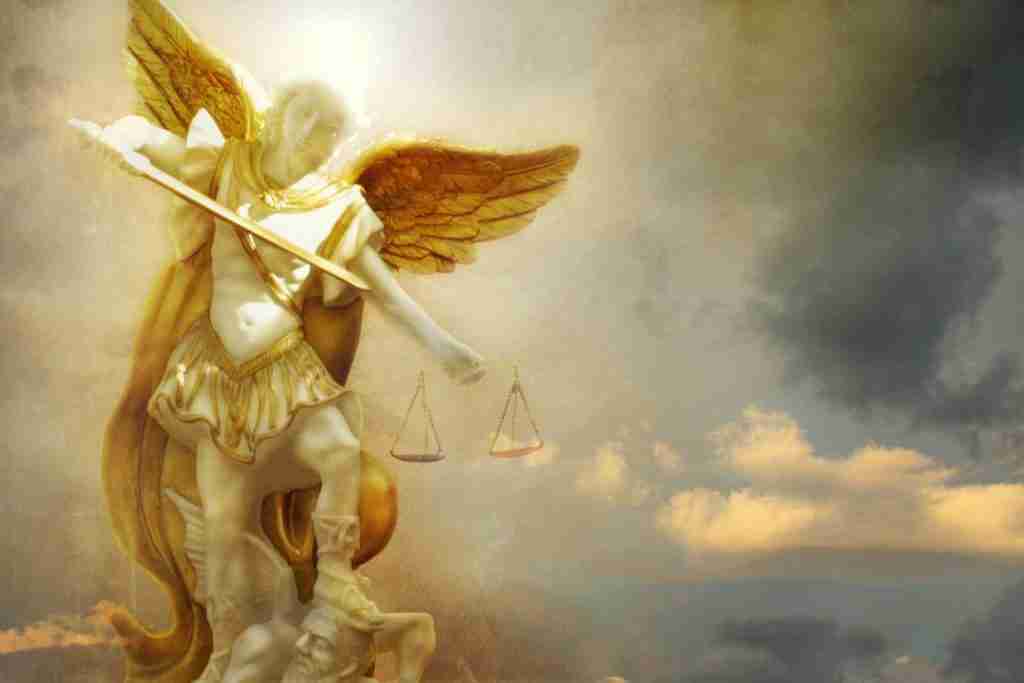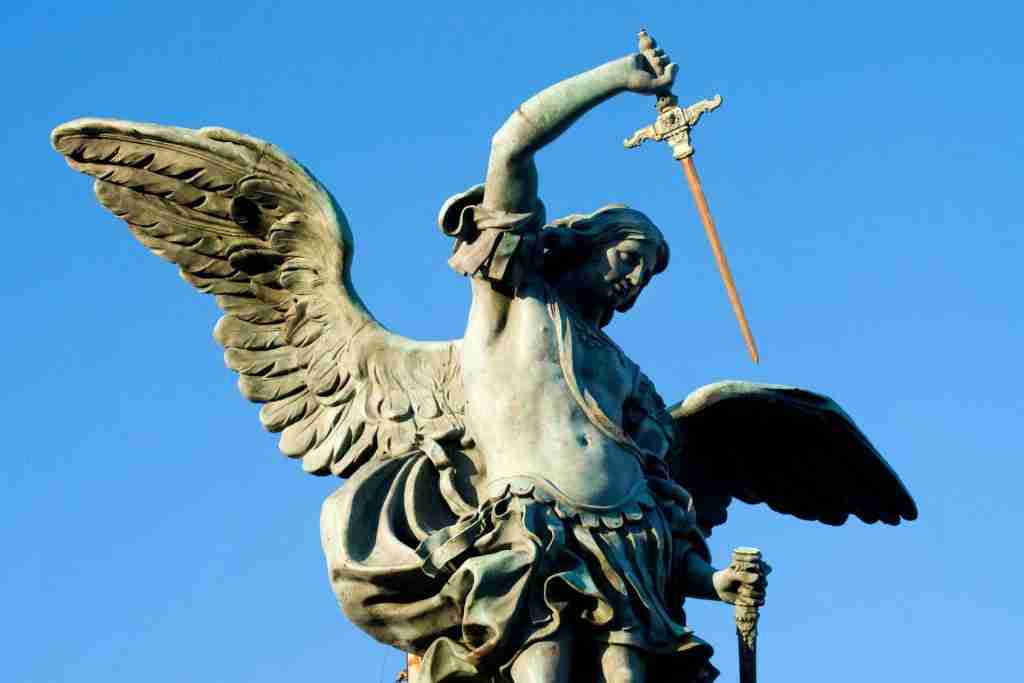Throughout Christian history, Saint Michael the Archangel has remained one of the most beloved and iconic figures. He is viewed by many believers as a powerful protector and the leader of God’s army against the forces of evil. His image and story have endured across centuries and cultures, taking on special significance for Christians seeking comfort, strength, and divine intercession.

The Archangel Saint Michael: origins and early importance
Saint Michael first appears in the Old Testament book of Daniel, where he is named as a heavenly protector of Israel during times of crisis and referred to as “the great prince.” He is depicted leading and commanding God’s armies against the wicked forces threatening the Israelites.
Michael’s elevated status as a guardian and warrior for God’s people established an early tradition of viewing him as a crucial ally and defender. Over time, rabbinic teachings expanded on Michael’s role, describing elaborate hierarchies of angels with Michael as their chief. By the 1st century CE, beliefs about angels and demons became especially important in Jewish apocalyptic literature speculating about the end times. In these texts, Michael continued to serve as the warrior leader of the heavenly hosts battling demonic forces before the final divine judgment.
This cemented his image as God’s highest-ranking champion of justice and protector of the righteous in the cosmic struggle between good and evil. When Christianity began to emerge from Judaism in the 1st century CE, these early Christians appropriated Jewish beliefs about the afterlife and final judgment. Michael was quickly adopted into Christian tradition, maintaining continuity from earlier Jewish texts.
Christian apocalyptic literature such as the Book of Revelation (written circa 95 CE) continued to cast Michael as God’s lead angelic warrior defeating Satan during the cataclysmic end-time events preceding the second coming of Jesus. By establishing Michael as Heaven’s supreme defender and conqueror of the Antichrist in Christian eschatology, the archangel took on special meaning as a last bastion of strength and hope before Christ’s triumphant return.
The Archangel Saint Michael: growth of devotion in the Middle Ages
In the ensuing centuries after the collapse of Rome, the volatile social and political climate of the Medieval period intensified focus on the afterlife and Apocalypse among European Christians. Saint Michael the warrior archangel resurfaced as a crucial beacon of reassurance and divine power during an age of widespread fear over the End Times and conflict with expanding Islamic empires.
By the 8th century CE, Saint Michael had become the patron saint of the Frankish empire under Charlemagne
Charlemagne constructed the abbey of Mont-Saint-Michel off the coast of Normandy around 708 CE as a strategic stronghold against invading Vikings and named the sanctuary for Saint Michael. This established Mont-Saint-Michel as an important pilgrimage centre with Michael as its patron—a place envisioned by Charlemagne as a symbolic bastion of Christendom in Europe.
Many subsequent churches and baptisteries were dedicated to Saint Michael across Western Europe during the Early Medieval period. Michael’s elevated importance reached new heights by the Roman Catholic Church during the High Middle Ages (c. 1100-1300 CE). Around the 11th century, Michael’s traditional religious feast day of September 29th began to be widely celebrated with special church services in England.
By the 12th century, several apparitions of Michael were recorded in Italy, increasing pilgrimages to sites such as the famous Monte Gargano shrine where the archangel is said to have first appeared in the 5th century. Additionally, Saint Michael and the legions of angels under his command came to be invoked regularly in liturgical chants and prayers during Mass, weddings, and other religious ceremonies for aid against hardship or the forces of darkness.

Most profoundly, Michael’s image rose to special prominence during the 14th and 15th centuries around St. Michael’s Mount in Cornwall and across western Europe generally. He was perceived by Christians as a mighty heavenly helper in times of heightened fear and struggle such as the Hundred Years War and Black Plague. The archangel and his victories over Satan and sin provided hope to the faithful amidst catastrophic devastation. As guardian of Paradise and psychopomp (one who carries souls to the afterlife), Michael was envisaged escorting the many plague victims to heaven, helping to popularize devotions and chants beseeching his guidance to the next world.

The Archangel Saint Michael: an icon of strength and courage for modern Christians
While Saint Michael’s abundant imagery and lore accumulated more extensively in the Middle Ages, the archangel remains an influential figure for many Christians today. Michael continues to be invoked regularly in various denominations of modern Christianity for protection and strength in difficult times. Many believers wear or carry his iconography such as images of Michael slaying a dragon to represent conquering fears associated with everyday spiritual and life challenges.
Prayers petitioning the intercession of the archangel against malevolent forces or illness demonstrate enduring perceptions of Michael as a compassionate celestial helper who bolsters human frailty with divine courage, comfort, and hope. For these reasons, devotion to Saint Michael has endured across shifting historical contexts as an inspirational reminder of God’s eternal triumph over evil.
When wrestling with adversity, Michael becomes a profound symbol of the protection and victory afforded to the faithful through Christ against life’s ordeals. Regardless of exact interpretations across Christian history, the commanding archangel of God’s army remains a paragon of the unwavering loyalty, valor, and reassurance God provides—a message as relevant today as ever. Saint Michael’s resolute presence from apocalyptic literature onwards has cemented him as an iconic figure offering comfort and confidence through faith in God’s ultimate providence.

The Archangel Saint Michael in Italian culture
Saint Michael has held an important place in Italian culture and religion for many centuries. Some key points about the history and significance of Saint Michael in Italy include:
- One of the most famous sites associated with Saint Michael in Italy is the Sanctuary of Monte Sant’Angelo on the Gargano peninsula. This site is believed to mark the location of the earliest recorded apparition of Saint Michael in western Europe, dating back to the 5th century AD. It became an important pilgrimage site during the Middle Ages.
- The legend holds that in 492 AD, Saint Michael the Archangel appeared several times to the Bishop of Sipontum near a grotto in Monte Gargano, requesting that the site be dedicated to Christian worship. This shrine grew over the next few centuries into the major Monte Sant’Angelo pilgrimage site.
- Several popes strengthened the sanctity of the Monte Sant’Angelo shrine over the years. In the 11th century, it was granted Abbey status by Pope Leo IX. Due to Saint Michael’s growing fame through reported apparitions, more than 13 other Michaelion shrines (sanctuaries dedicated to Saint Michael) appeared in Italy through the early Middle Ages.
- Many key military victories in Italian history were attributed to Saint Michael’s divine intervention. This included the Lombards’ 8th century victory over the Byzantine Greek forces, solidifying Lombard control of the Italian peninsula. This fueled Saint Michael’s prestige in Italy as both a warrior-protector and patron saint.
- Saint Michael also became one of the patron saints of the Papal States and the city of Rome. Many churches were named for him, the most famous being the Castel Sant’Angelo in Rome which was converted from a mausoleum into a church in the 14th century.
So in summary, Saint Michael was highly revered in Italy especially during the Middle Ages, with the Monte Gargano shrine being instrumental in spreading his cult and fame at that time as a heavenly protector.

The Bottom line
In closing, the Archangel Saint Michael stands out as one of the most revered celestial figures in the history of Christianity. From his earliest mentions in the Old Testament as a guardian of God’s chosen people, to his role as an apocalyptic warrior heralding the end times, Michael’s image resonates as a supreme embodiment of divine strength and protection.
The breadth of Saint Michael’s significance is demonstrated by the sheer number of sanctuaries, churches, and artistic depictions he inspired across Christian Europe during the Middle Ages and through modern times. His reported apparitions at sites like Monte Sant’Angelo fueled intense reverence in Italy and beyond as both a patron saint and conduit between earthly hardship and heavenly aid.
Regardless of the century or denomination, Christians have consistently looked to the courageous archangel to find comfort in times of adversity, conflict, sickness, and doubt. His perseverance as leader of the angelic armies and guardian of the Church Militant preserves him as an eternal symbol of God’s providence triumphing over the forces of darkness.
For the faithful, Saint Michael’s righteous presence is a reminder of the spiritual victory assured to believers through divine salvation and protection. In essence, this formidable archangel serves as the ultimate emblem of God’s enduring love and strength shielding Christians through the ages against life’s storms. By providing reassurance of the order and justice of Heaven, he brings consolation and empowerment to persevere with faith in even the most trying hours of human history. Therefore, the legend of Saint Michael shall persist in offering solace and confidence to Christianity for generations to come. Keep following us to find out all the trivia we offer and our new LCN App.

